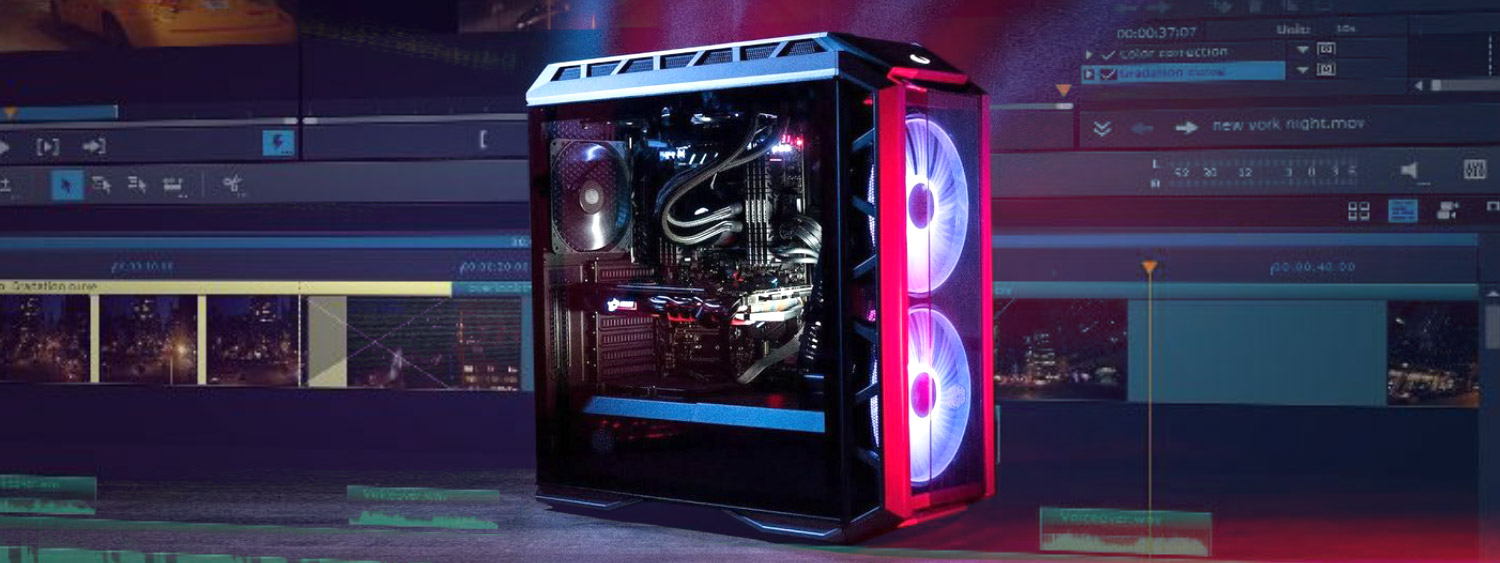
Best PC Build for 3D Rendering
3D Rendering is a process of transforming both 2D & 3D models into photography like image or animation. And if you’re a beginner in the rendering profession, and you need to build a PC in order to do 3D Rendering services, then this article has the best recommendations for you. In this article, we’ll walk you through the best PC configuration for rendering. You must have to ensure that you put whatever it needs to run the application smoothly and without any hazard.
There will be 2 sections in this article where you’ll find some examples of OK to HARDCORE PC configuration, and what you should consider or how you’ll choose your components.
Section 1: Example for 3D Rendering PC builds
All these PC builds examples are specially designed to empower all 3d rendering programs to run them smoothly like Maya, Blender, Cinema 4D, Modo, and the rest. And after building your PC, we always recommend running the latest version of Windows. You can buy or update the latest version of Windows here.
The Cost-Effective build ($700)
The base of this PC build is Intel’s great performer budget processor, dual-channel DDR 4 RAM, a decent amount of storage, and cheap case. This build boosts its power by adding an SSD as a boot drive. Plus the performance can be increased by installing some modern modeling software which reads and writes more often than other software.
Graphics Card: GTX 1050 Ti
Motherboard: Gigabyte GA-B250M
RAM: 8GB DDR4
Storage 1: 120GB PNY SSD
Storage 2: 1TB HDD
Power Supply: EVGA 450 B1
CPU Cooler: Stock
Case: Vivo Case-V00
Operating System: Windows 10
Price-Performance balanced build ($1250)
This build is a budget-friendly mid-range performer. A great budget to performance ratio. In this build, you’ll get 6 Core CPU with the latest architecture, bigger SSD. Rest of the components are upgraded too. More quality case, more reliable and quieter cooling system.
Graphics Card: GTX 1060 6GB
Motherboard: MSI Z390-A Pro
RAM: 16GB DDR4
Storage 1: 250GB Crucial MX500 SSD
Storage 2: 2TB HDD
Power Supply: EVGA GQ 650W
CPU Cooler: CryOrig H7
Case: NZXT S340
Operating System: Windows 10
High-Performance Build ($2500)
The professional-level build will provide you with very high performance. But not twice as much performance as the Price-Performance balanced build. But when you are doing 3D Rendering on a professional level, the Ryzen 7 CPU. This processor has the highest single-threaded and multi-threaded performance. You’ll get exceptional output when rendering with this processor.
Along with a very quiet CPU cooler, RTX graphics card, and one of the fastest SSD, this package will do all the tasks with ease.
Graphics Card: RTX 2070
Motherboard: MSI X470 Gaming Plus
RAM: 32GB DDR4
Storage 1: 500GB Samsung 970 EVO M.2 SSD
Storage 2: 3TB HDD
Power Supply: EVGA G3 750W
CPU Cooler: Scythe Fuma
Case: Fractal Design Define R5
Operating System: Windows 10
Professional Build ($3600)
The best performer before going to the edge. This build is not made concerned about budget. At very high clock-speed, 8-core, 16-thread CPU. This one has a great combination of single- and multi-threaded performance. 1TB of tremendously fast SSD will feel like jelly when working.
Graphics Card: RTX 2080
Motherboard: Gigabyte Z390 Aorus Pro
RAM: 32GB Quad Channel DDR4-3200
Storage 1: 1TB Samsung 970 EVO M.2 SSD
Storage 2: 2x 4TB HGST HDD
Power Supply: EVGA G3 850W
CPU Cooler: Fractal Design Celsius S24
Case: Enthoo Evolv
Operating System: Windows 10
Section 2: Choosing the best HARDWARE for 3D Rendering
CPU
CPU is unarguably one of the most important factors when rendering. But once there was a time when a CPU was the most important factor. But now the time has changed. Now, there are many players in this rendering PC config. These days, a graphics card is what plays the most important role. But we all know that CPU is the kind of thing which cannot be apart from any computing task. So faster CPU is always better. Intel CPU offers the best single-thread performance. On the other hand, AMD CPU offers the best multi-thread performance.
Graphics Card
This is where the game changes. The strength of your graphics card controls the speed of your rendering work. You’ll most likely want an NVIDIA graphics card. Because between NVIDIA and AMD (AMD-backed OpenCL and NVIDIA’s proprietary CUDA) graphics card, the NVIDIA offers the best performance.
“To quote GPU Rendering Magazine’s article on OpenCL and CUDA: “As an easy rule of thumb, if your app supports CUDA, grab an NVIDIA card, even if it also supports OpenCL,” and “If the applications you use split their support between CUDA and OpenCL we recommend using a recent NVIDIA card.””
RAM
Actually, RAM is not the biggest concern here. Because of all the latest computer systems and consumers use 4 GB DDR 4 RAM. Lower end system tends to use dual-channel RAM while higher-end models use quad-channel RAM. A dual-channel RAM performs slightly better than a single-channel RAM and a quad-channel performs slightly better than dual-channel RAM. But my recommendation is to use 8 GB RAM. Because some 3D Rendering programs like Cinema 4D is a bit RAM hungry.
Storage
You are not using your PC to play games, right? So there is no need for a whopping amount of storage. 1 TB or 2 TB of space is enough to get the job done. But SSD storage will be more helpful in this case. Everything will feel faster. On an SSD installing OS, starting an application, or run it, your project caches will certainly speed up the workflow.
***If you use a different CPU, Graphics card, or Storage than we recommend in our builds, make sure you get a compatible motherboard, RAM, and CPU cooler.***



